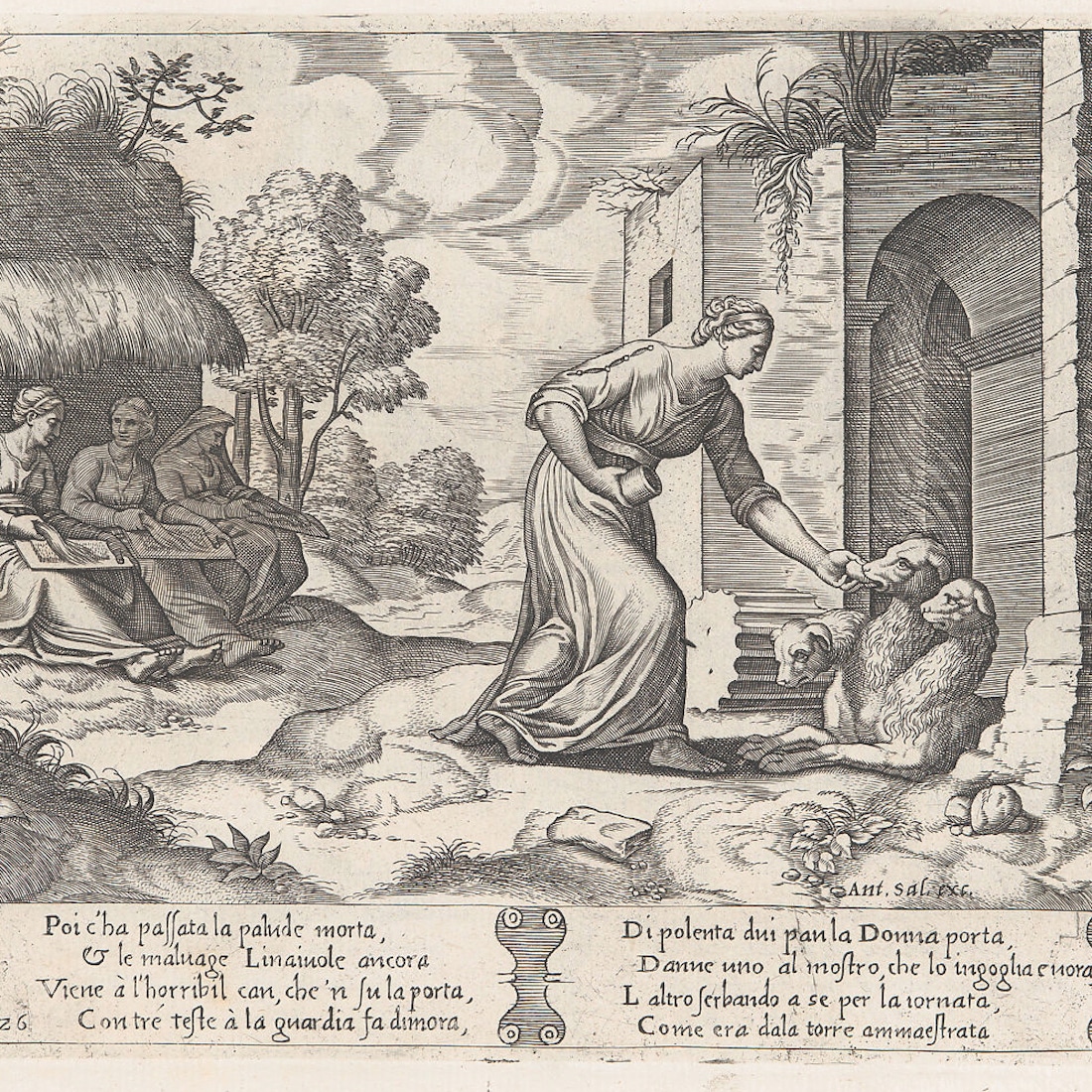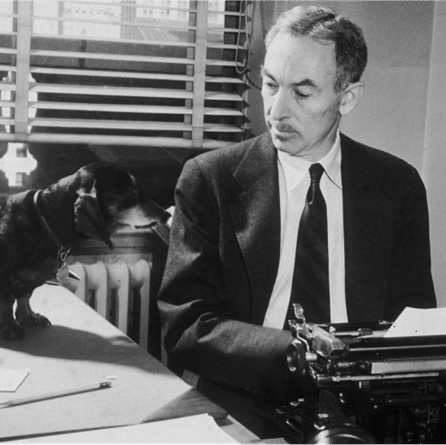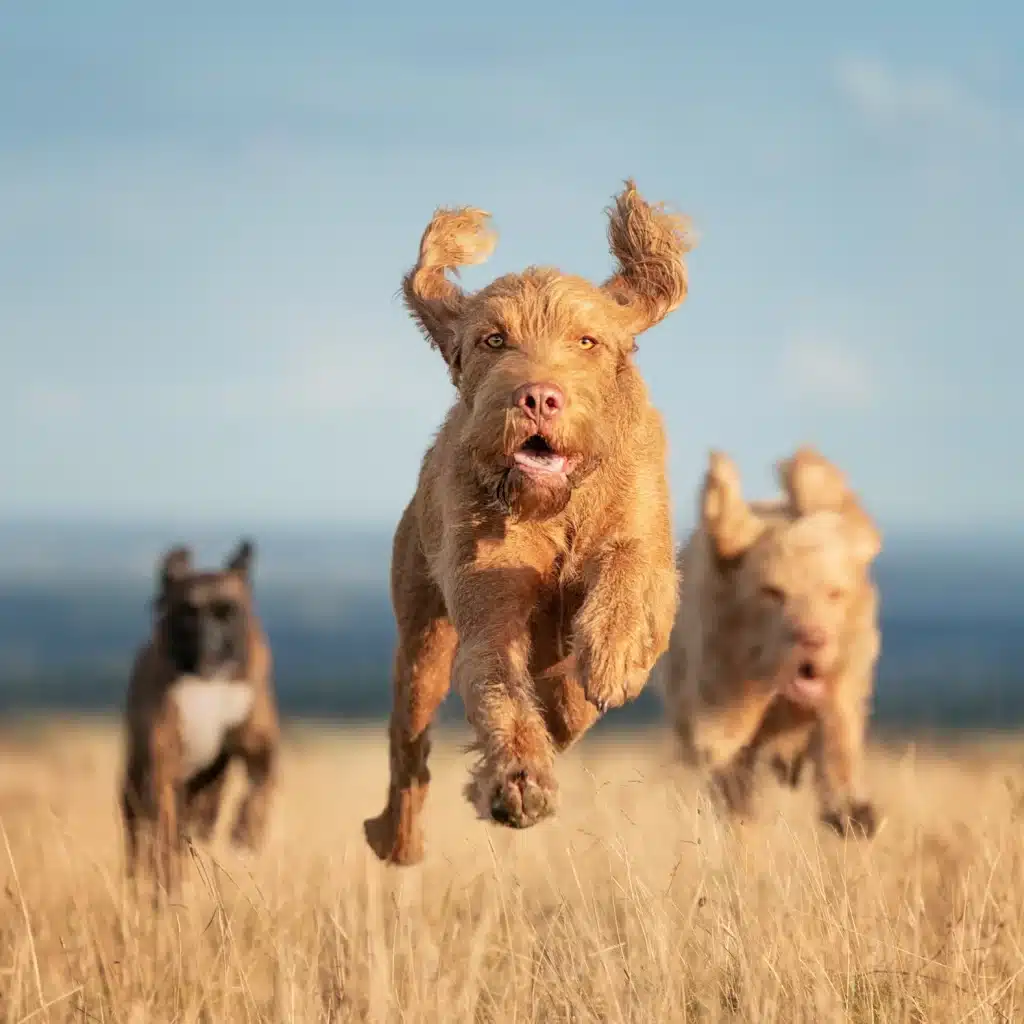When did dogs become man’s best friend? Until recently, the oldest known canine remains were 5,000-years-old (they were of a sort of Siberian Husky). Then a discovery in the Goyet Caves in Belgium placed the date 36,500 years ago. Whenever it took place, here is a brief canine history of the world in ten objects and places.
1. Mesopotamia – The Collar
Although the Egyptians are widely credited with the invention of the dog collar, it probably originated in Mesopotamia. A golden pendant featuring a dog that looks very like a Saluki wearing a rather nifty, wide collar can be seen in the Louvre in Paris.
2. Persia – Zoroastrian scriptures
The early Persians are notable for their reverence of all things canine. Like the Mesopotamians, they bred dogs that looked like Saluki so perhaps Persia was the true place of origin for the Afghan Hound. The Avesta, the Zoroastrianism ‘bible’, stresses that if you don’t treat dogs well you can forget any sort of afterlife. If you killed a dog your soul would spend eternity in the House of Lies.
3. India – Mahabharata
The reverence with which animals are regarded in ancient Indian tradition is well documented. Many of the gods were accompanied by dogs and prehistoric paintings of man’s best friend can be found in the astounding Bhimbekta rock shelters of Madhya Pradesh. In the great cultural epic of Mahabharata, King Yudisthira is accompanied by a faithful companion on his great odyssey to the gates of paradise, where his friend his reveals himself to be the god Vishnu, thus tying the dog to ancient Indian conception of the divine.
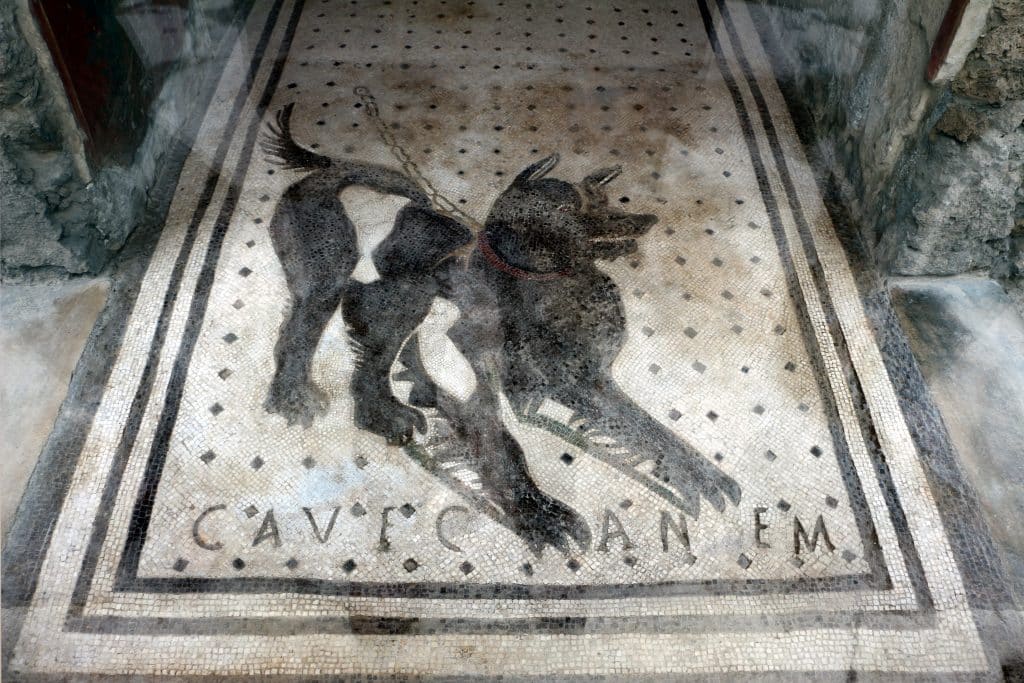
4. Egypt – Lead
The Egyptians may not have invented the collar, but they do seem to have invented the lead, which they fashioned from a single piece of stitched leather glued to a ring. The dog was linked to the god Anubis and at the temple of Anubis in Saqqara they were buried with great ceremony to ensure a safe passage to the afterlife.
5. Greece – The Spiked Collar
Spiked collars sound unkind, but they were invented by the ancient Greeks to protect dogs from attacks by wolves. Greek philosophers seem to have loved dogs. Diogenes for example, declared the dog the most virtuous of creatures for its carefree life and instinct for telling friend from foe. Dogs, he declared, neither agonised over the past nor fretted about the future but instead lived entirely in the moment. The word ‘Cynic’, in fact, derives from the ancient Greek word for ‘dog-like’. When he was asked why he was called a dog, he replied: ‘I fawn on those who give me anything, I yelp at those who refuse, and I set my teeth in rascals.’
6. Rome – Cave Canem
While the Romans may have kept a variety of animals as pets including cats, goats and caged birds, it was the dog who was held in highest regard. Dogs were cited in Roman law code as home guardians and protectors of the flock. Vigil wrote of them: ‘Never, with dogs on guard, need you fear for your stalls a midnight thief.’
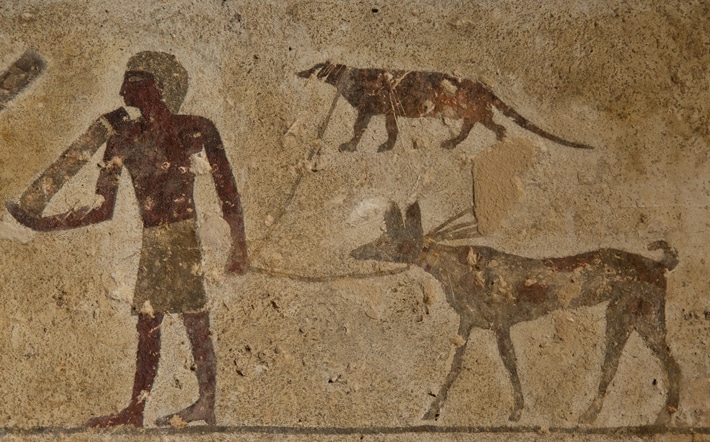
7. China – The Jade Amulet
The ancient Chinese viewed dogs as a gift from the divine, and their bodies were buried in front of cities in order to deter bad luck and disease. Jade amulets depicting dogs were extremely popular.
8. Mesoamerica – Popol Vuh
The ancient cultures of Mesoamerican civilization (the Mayan, Aztecs, and Tarascans, but you knew that) considered dogs as key to ensuring passage to the afterlife. They noted the dogs ability to swim, and thus deemed them to be the nominated navigators to allow souls to cross the expanse of water to the afterlife and netherworld of Xibalba.
9. Celtic and Norse Dogs – Táin Bó Flidhais
Various depictions of the dog in Celtic and Norse mythology demonstrate their association with protection, healing and the afterlife. Nehalennia, Celtic goddess of healing and good fortune is almost exclusively shown accompanied by dogs. The Irish Wolfhound was used by the Celts as a war dog, guardian and companion.
10. Middle Ages – Très Riches Heures
It was in the middle ages that dogs began to be considered in more modest terms and appreciated for how we see them today. Symbols of loyalty and faith, dogs experienced a surge in popularity during this period as companions of all people, from the common hunter to the sedentary aristocrat. In praise of their intelligence, Gaston, Comte de Foix wrote: ‘I speak to my hounds as I would to a man… and they understand me and do as I wish better than any man of my household.’
Article by Alex Mulcahy.
